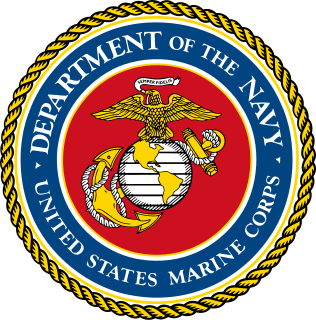
A battalion is a military unit, typically consisting of 300 to 1000 soldiers commanded by a lieutenant colonel, and subdivided into a number of companies. In some countries, battalions are exclusively infantry, while in others battalions are unit-level organizations.

A company is a military unit, typically consisting of 80–250 soldiers and usually commanded by a major or a captain. Most companies are formed of three to six platoons, although the exact number may vary by country, unit type, and structure.

A platoon is a military unit typically composed of two or more squads, sections, or patrols. Platoon organization varies depending on the country and the branch, but a platoon generally comprises 50 people, although specific platoons may range from 10 to 100 people. A platoon is typically the smallest military unit led by a commissioned officer. The platoon leader is usually a junior officer—a second or first lieutenant or an equivalent rank. The officer is usually assisted by a platoon sergeant.

A brigade is a major tactical military formation that is typically composed of three to six battalions plus supporting elements. It is roughly equivalent to an enlarged or reinforced regiment. Two or more brigades may constitute a division.
This is a list of British ground forces in the Falklands War. For a list of ground forces from Argentina, see Argentine ground forces in the Falklands War
A weapons company, sometimes called a manoeuvre support company, is a company-sized military unit attached to an infantry battalion to support the rifle companies of the battalion. It usually possesses some combination of machine-guns, mortars, anti-tank missiles, anti-aircraft missiles, reconnaissance vehicles and, sometimes, assault pioneers.
Marine Air-Ground Task Force is a term used by the United States Marine Corps to describe the principal organization for all missions across the range of military operations. MAGTFs are a balanced air-ground, combined arms task organization of Marine Corps forces under a single commander that is structured to accomplish a specific mission. The MAGTF was formalized by the publishing of Marine Corps Order 3120.3 in December 1963 "The Marine Corps in the National Defense, MCDP 1-0". It stated:
A regimental combat team (RCT) is a provisional major infantry unit of the United States Marine Corps to the present day and of the United States Army during World War II and the Korean War. It is formed by augmenting a regular infantry regiment with smaller tank units, artillery units, combat engineer units, mechanized units, cavalry units, reconnaissance units, signal corps units, air defense units, quartermaster units, military police units, medical units, or other support units to enable it to be a self-supporting organization in the combat field.

Task Force Tarawa (TFT) was the name given to the 2nd Marine Expeditionary Brigade during the 2003 invasion of Iraq. It was a Marine Air-Ground Task Force commanded by Brigadier General Richard F. Natonski that was attached to the I Marine Expeditionary Force during the course of the invasion and was most notable for its participation in the heavy fighting in the city of an-Nāṣiriyyah. During its time supporting Operation Iraqi Freedom, the task force suffered 23 Marines killed in action.

The United States Marine Corps is organized within the Department of the Navy, which is led by the Secretary of the Navy (SECNAV). The most senior Marine commissioned officer is the Commandant of the Marine Corps, responsible for organizing, recruiting, training, and equipping the Marine Corps so that it is ready for operation under the command of the unified combatant commanders. The Marine Corps is organized into four principal subdivisions: Headquarters Marine Corps, the Operating Forces, the Supporting Establishment, and the Marine Forces Reserve.
In the United States Marine Corps, the ground combat element (GCE) is the land force of a Marine Air-Ground Task Force (MAGTF). It provides power projection and force for the MAGTF.
The United States Marine Corps' Anti-Terrorism Battalion was a specialized infantry battalion that would deploy on a short notice in response to terrorist attacks during the Global War on Terror. Anti-Terrorism Battalion is now a disbanded unit of the United States Marine Corps.

1st Marine Expeditionary Brigade is a unit in the I Marine Expeditionary Force and is the "middleweight" global crisis response force.

The Dominican Army or Ejército de República Dominicana, is one of the three branches of the Armed Forces of the Dominican Republic, together with the Navy and the Air Force.

In the United States Army (USA), U.S. Marine Corps (USMC), U.S. Air Force (USAF), and U.S. Space Force (USSF), captain is a company grade officer rank, with the pay grade of O-3. It ranks above first lieutenant and below major. It is equivalent to the rank of lieutenant in the Navy/Coast Guard officer rank system. The insignia for the rank consists of two silver bars, with slight stylized differences between the Army/Air Force version and the Marine Corps version.
Allied Forces North Norway (NON) was a NATO command tasked with the defense of Northern Norway. NON's area of responsibility covered the three northernmost counties of Norway: Nordland, Troms and Finnmark, as well as the adjacent sea territory. It formed part of Allied Forces Northern Europe.
Allied Forces South Norway (SONOR) was a NATO command tasked with the defense of Southern Norway. SONOR's area of responsibility included all of Norway with the adjacent sea territory excluding the three northernmost counties of Norway, which were under Allied Forces North Norway.









